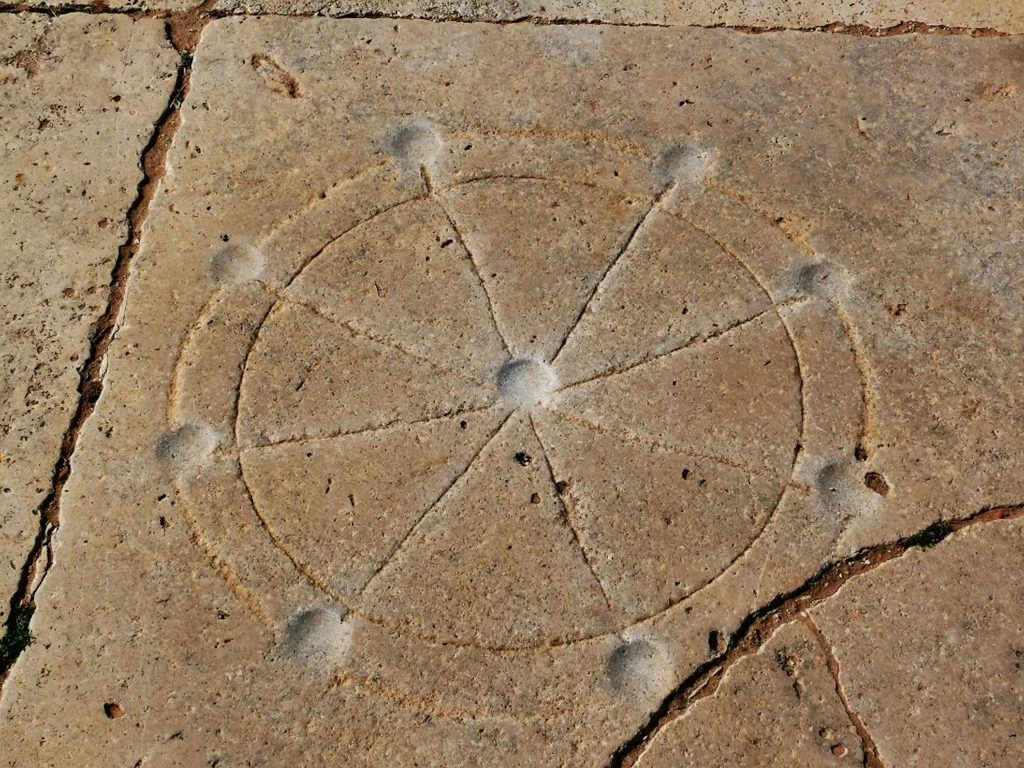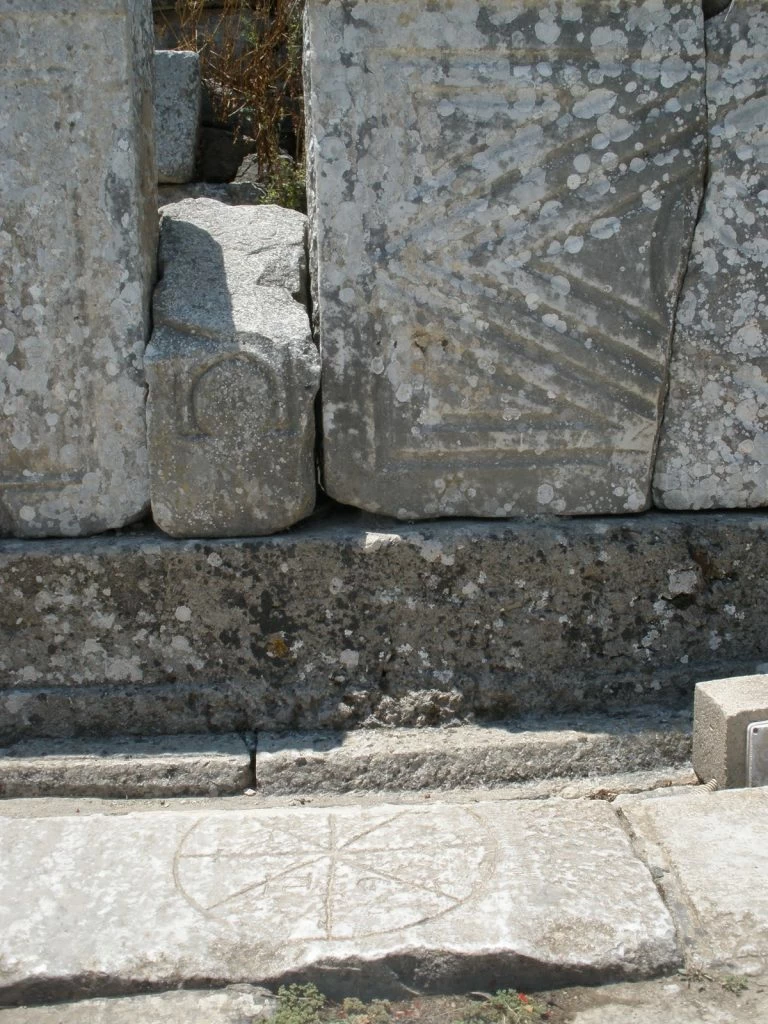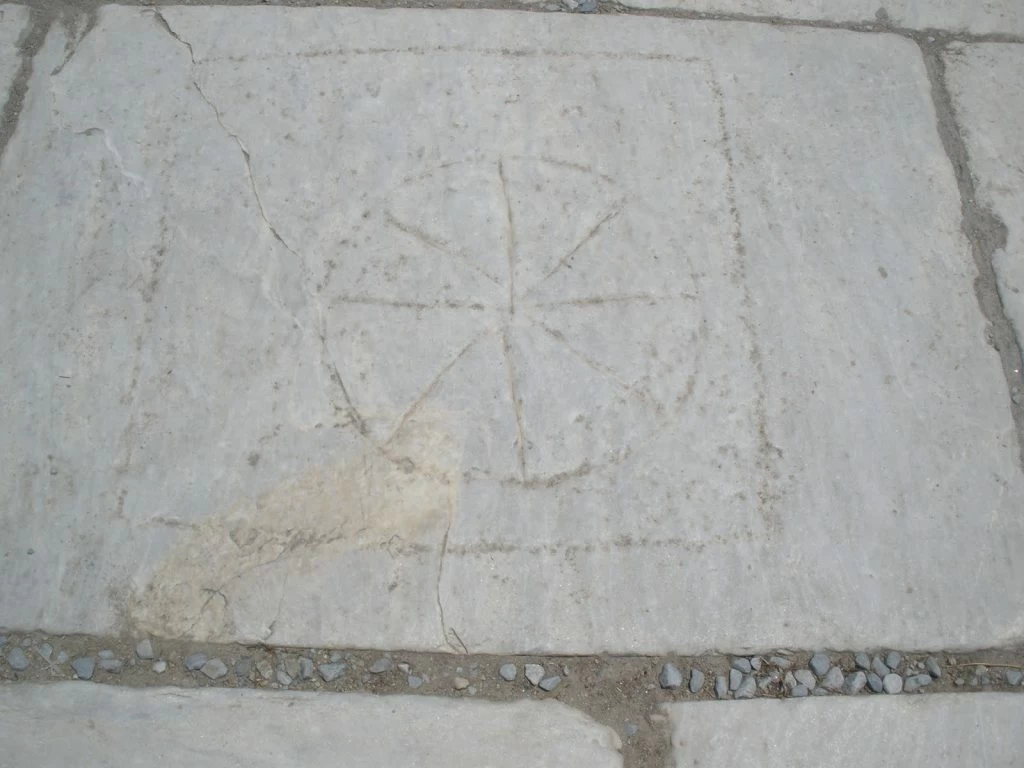
Origin and Discovery
Rota, a game from ancient Rome, is often found carved into stones along Roman roads and buildings throughout the vast Roman Empire. The original Roman name of the game remains unknown. The name “Rota,” meaning “wheel” in Latin, was given by Elmer Truesdell Merrill in his 1916 article, where he first introduced the game to the world. Merrill also developed a set of rules for the game based on similar ancient games, and these rules are still referenced today.
Historical Context
There are carvings of Rota on the floor tiles of various ancient sites, such as the Marble Road in Ephesus, Turkey, and the Old Forum in Leptis Magna, Libya. These carvings provide insight into the game’s widespread popularity in the Roman world.

Literary References
The rules of Rota might be alluded to in two poems by the Roman poet Ovid: “Ars Amatoria” (The Art of Love) and “Tristia.” In these works, Ovid describes a game divided into sections corresponding to the months of the Roman calendar year, which originally had ten months before Julius Caesar’s calendar reform. However, all discovered Rota boards have nine cells, suggesting Ovid could be describing a different game or a variation of Rota with ten cells. Despite this, Ovid clearly mentions that the objective of the game is to align three pieces in a row.
J. Lewis May’s translation of Ovid’s poems supports the idea that these descriptions pertain to Rota. However, Mozley’s translation in the Loeb Classical Library suggests Ovid might be referring to other games like Ludus Duodecim Scriptorum (Duodecim Scripta) or Nine Men’s Morris, which involve capturing pieces and forming lines.
Another interpretation is that Ovid might be describing a game with a 3×4 board of 12 cells, where players place and move pieces to form a line of three, similar to Tic-Tac-Toe but with movement.
Rules of Rota
- Players: Two players
- Board: A circle of 8 cells connected by lines, with a 9th cell in the center.
- Pieces: Each player has three pieces (one set black, the other white).
- Setup: Players decide who goes first by lot (e.g., coin toss). They alternate placing their pieces on any of the 9 cells.
- Gameplay: After placing all six pieces, players alternate moving their pieces, aiming to form a line of three across the circle’s diameter. Movement rules are:
- Players cannot jump over opponent pieces.
- Pieces can only move to unoccupied cells.
- Two pieces cannot occupy the same cell.
- Players cannot skip turns.
- Objective: The first player to align three pieces in a row across the diameter wins.

Strategy
Rota is purely a game of strategy with no element of luck, as it does not involve dice. Players must strategically place their pieces to avoid being blocked while trying to control the center cell. The first player typically aims to capture the center cell early, while the opponent must prevent them from aligning three pieces. The game is relatively short and always results in a winner, as it cannot end in a tie.